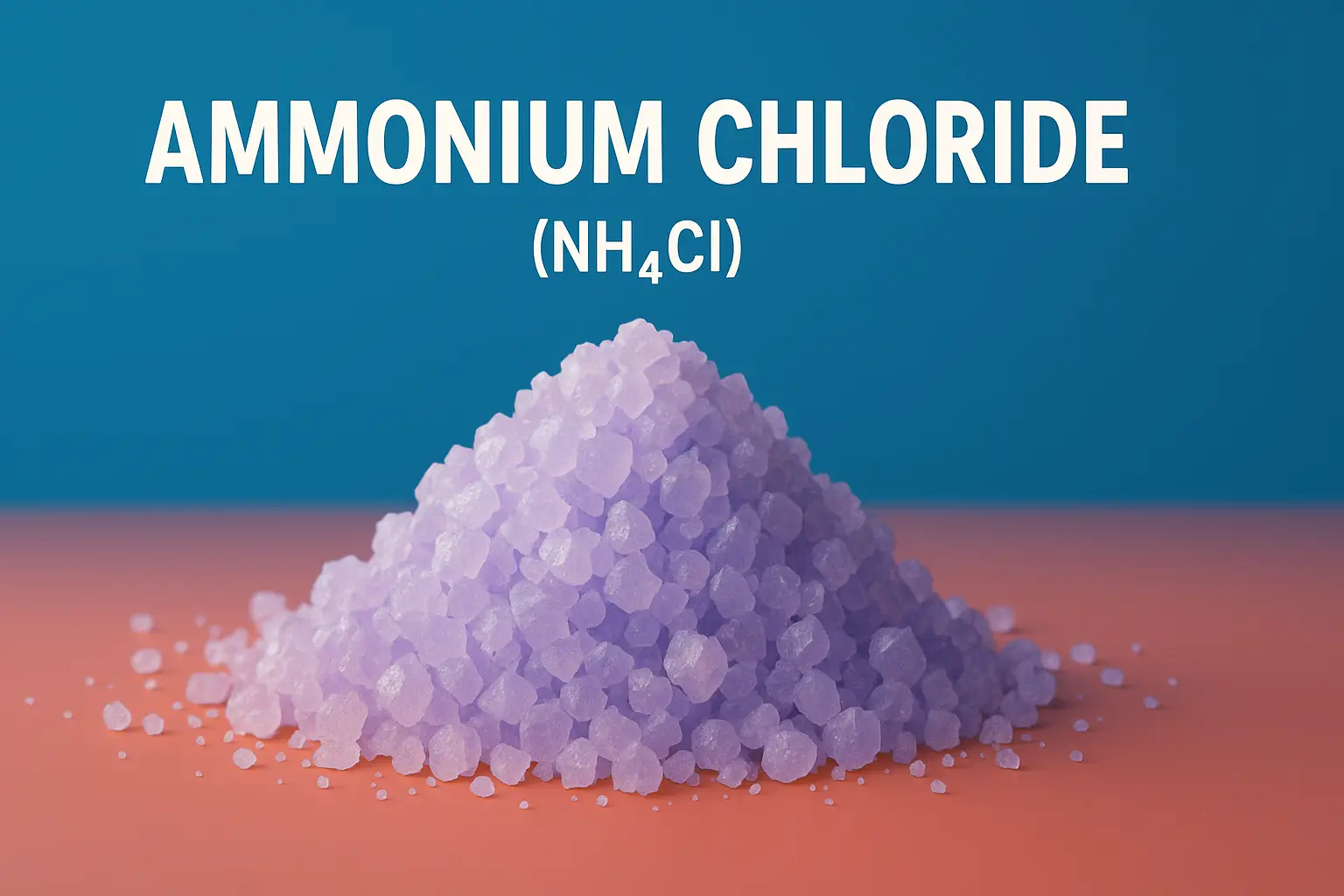Preparation of Ammonium chloride:
- Ammonium chloride can be prepared by the reaction of ammonia (NH₃) with hydrochloric acid (HCl).
- The chemical reaction is as follows:
NH3 + HCl → NH4Cl
Properties of Ammonium chloride:
- Physical Appearance: White crystalline solid.
- Solubility: Soluble in water and has a cooling, salty taste.
- Nature: Ionic compound.
- Melting Point: 338°C (640°F).
- Chemical Nature: Weak acid, capable of undergoing reactions with bases.
Uses
- Expectorant: Used in cough medicines to help clear mucus from the respiratory tract.
- Buffering Agent: Employed in the pharmaceutical industry to maintain the pH of solutions.
- Fertilizer Production: Used in the production of fertilizers, particularly for rice and wheat cultivation.
- Industrial Applications: Utilized in electroplating, soldering flux, and metal recovery processes.
Storage
- Conditions: Should be stored in a cool, dry place, away from heat and direct sunlight.
- Container: Keep in a tightly closed container to minimize exposure to air and moisture.
- Avoid Contact: Store away from strong acids, bases, and oxidizing agents to prevent chemical reactions.
Assay (Determination of Concentration/Purity):
Common Method – Acid-Base Titration:
-
Prepare a Standard Solution:
- Dissolve a known amount of a strong base (e.g., sodium hydroxide, NaOH) in water to create a standard solution of known concentration.
-
Take the NH₄Cl Sample:
- Accurately weigh a sample of NH₄Cl and dissolve it in a known volume of water.
-
Add an Indicator:
- Add a pH indicator (e.g., phenolphthalein) to the NH₄Cl solution. The indicator changes color when the solution reaches neutrality.
-
Titrate:
- Slowly add the NaOH standard solution to the NH₄Cl solution while stirring.
- The NH₄Cl reacts with NaOH, forming water and ammonium hydroxide (NH₄OH).
- The endpoint is indicated by the color change of the indicator, signaling the neutralization of the solution.
-
Calculate the Concentration:
- Measure the volume of NaOH used in the titration.
- Use the stoichiometry of the reaction and the volume of NaOH to calculate the concentration or purity of the NH₄Cl sample.

